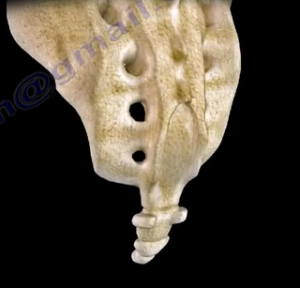Tailbone pain during pregnancy refers to dull or sharp pain which occurs at the end section of the spine, just between the upper buttocks in the lower back. Sometimes described as a ‘bruised tailbone,’ tailbone pain can occasionally be very intense.
Increased pressure exerted by the growing baby and expanding uterus on the tailbone causes the coccyx to rub against the lower back; this is what causes the pain. Tailbone injuries can also occur during deliver when the baby is passing via the birth canal. Such an injury can be a tailbone chip, a bruise, or even fracture in some instances.
Women with a history of tailbone conditions need to consult a doctor and remedy underling conditions and causative factors before trying to get pregnant. This is because treatment for tailbone problems cannot be performed during pregnancy as it can adversely impact or harm the growing fetus.
Causes of tailbone pain during pregnancy
Some of the common causes of tailbone pain during pregnancy are discussed below.
- During the first trimester
- Tailbone pain during early pregnancy occurs due to relaxation of pelvic floor ligaments due to actions of estrogen and relaxin hormones.
- Tailbone pain present due to underlying conditions, as listed below, can worsen during pregnancy:
- Fall on tailbone; injury to the lower back.
- Constipation
- Cancer in the pelvic region
- Herniated disc present in lower back. Tailbone pain may occur in the right or left buttock or in the sacral region; it may migrate downwards across one leg and sometimes cause tingling sensations in the feet.
- SPD or symphysis pubis dysfunction marked by pain spots in the pubic area or other pelvic regions can cause spread of tailbone pain during pregnancy down one of the legs; such pain is restricted to above the knees.
- During the second and/or third trimester
- During late pregnancy, tailbone pain may occur when the unborn child’s head presses against the coccyx.
- Some factors which can trigger tailbone pain during late pregnancy include coughing, increased pressure on the tailbone, sneezing, intercourse, bowel movements, and labor; varied exercises such as running, walking, riding, cycling, jumping, doing squats, lifting weights or other heavy objects, and driving; and activities like standing for long periods, sitting on a stiff or hard surface, lying on one’s back, and moving from the sitting position to a standing one.
Treatment of tailbone pain during pregnancy
Tailbone pain during pregnancy has no known cure. It typically disappears on its own after delivery. Severe tailbone which repeats during successive pregnancies needs to be checked by a surgeon. He/she may recommend a coccygectomy, i.e., surgical removal of the coccyx.
Mild pain killers may be given for pain relief. Steroid injections, aspirin, and ibuprofen, etc., are not suggested during pregnancy.
Massage of the affected area or special exercises advised by a pregnancy chiropractor or a physiotherapy can help find relief from tailbone pain.
Self-care guidelines for tailbone pain alleviation include:
- Sitting on an inflatable ring, a donut pillow, or a wedge pillow.
- Wearing maternity support belt and shoes with cushioned soles
- Avoiding high-heeled shoes, standing for long hours, or bending to pick items.
- Use of ice or heat pads on affected areas; yoga; swimming; and changing positions from sitting to standing and vice versa on a frequent basis.
- Regular bowel emptying is also helpful in easing tailbone pain during pregnancy.

